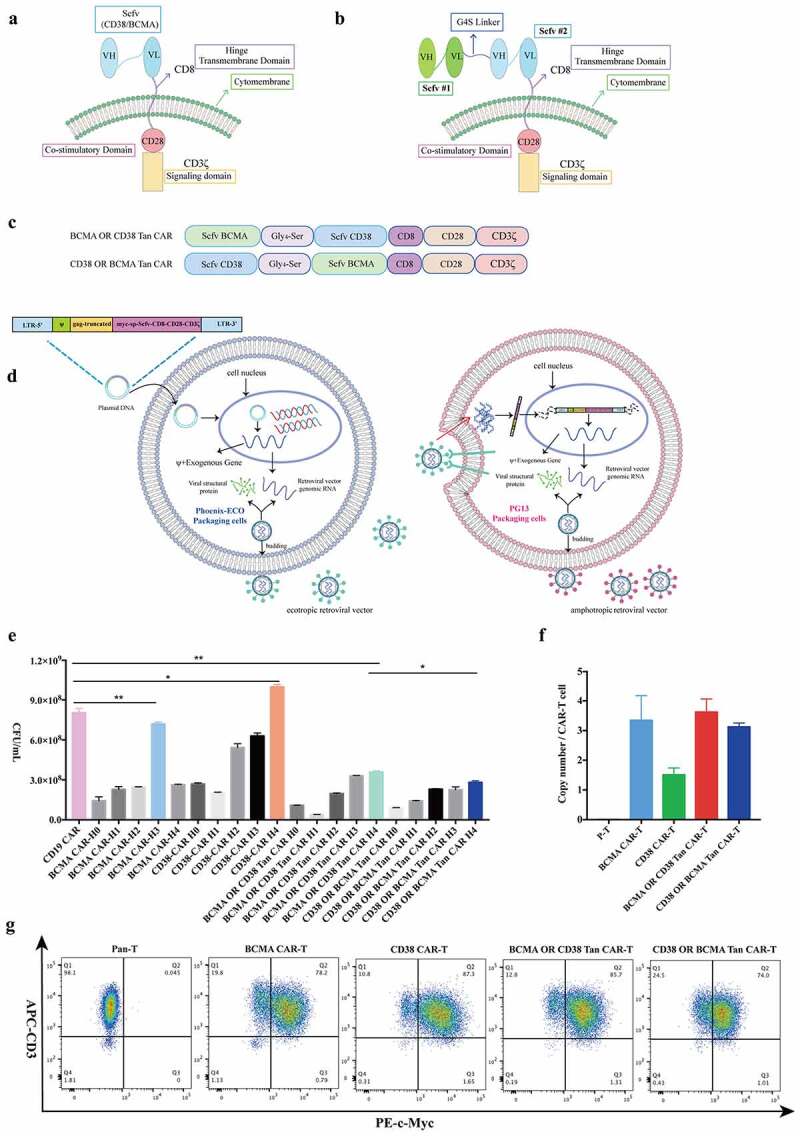Figure 1.

Construction and generation of retroviral vectors. (a) Schematic of a second-generation, single-targeted CAR (BCMA-CAR or CD38-CAR). (b) Schematic of a bi-specific, OR-gate tandem-CAR. (c) Schematic of two Tan CARs containing variations in the order of scFv domains. CD8 is the hinge and transmembrane domain, CD28 is the costimulatory domain. (d) Schematic of the retroviral vector packaging process. First, the Phoenix-ECO cells produced ecotropic retroviral vectors by transient transfection and then integrated them into the packaging cell line PG13 to produce amphotropic retroviral vectors that can transduce human primary T cells. (e) The titer detection of amphotropic retroviral vectors by Q-PCR. The amphotropic retroviral vector supernatants from CD38-CAR, BCMA-CAR, or Tan-CARs were harvested every 24 h for a total of 5 days, named H0, H1, H2, H3, and H4. (f) Detection of the copy number of CAR molecules. Q-PCR was performed using primers specific for this transgene, and genomic DNA extracted from the isolated and activated human T cells 48 h after transducing was used as templates. (g) Analysis of transduction efficiency. The retroviral vectors BCMA-CAR, CD38-CAR, or Tan-CARs transduced the isolated and activated human T cells, and the transduction efficiency was evaluated by detection of c-Myc protein expression using flow cytometry. The data shown is the mean ± standard deviation (SD). The results were analyzed with a student’s t test. Error bars represent the SD, * p < .05, **p < .01
